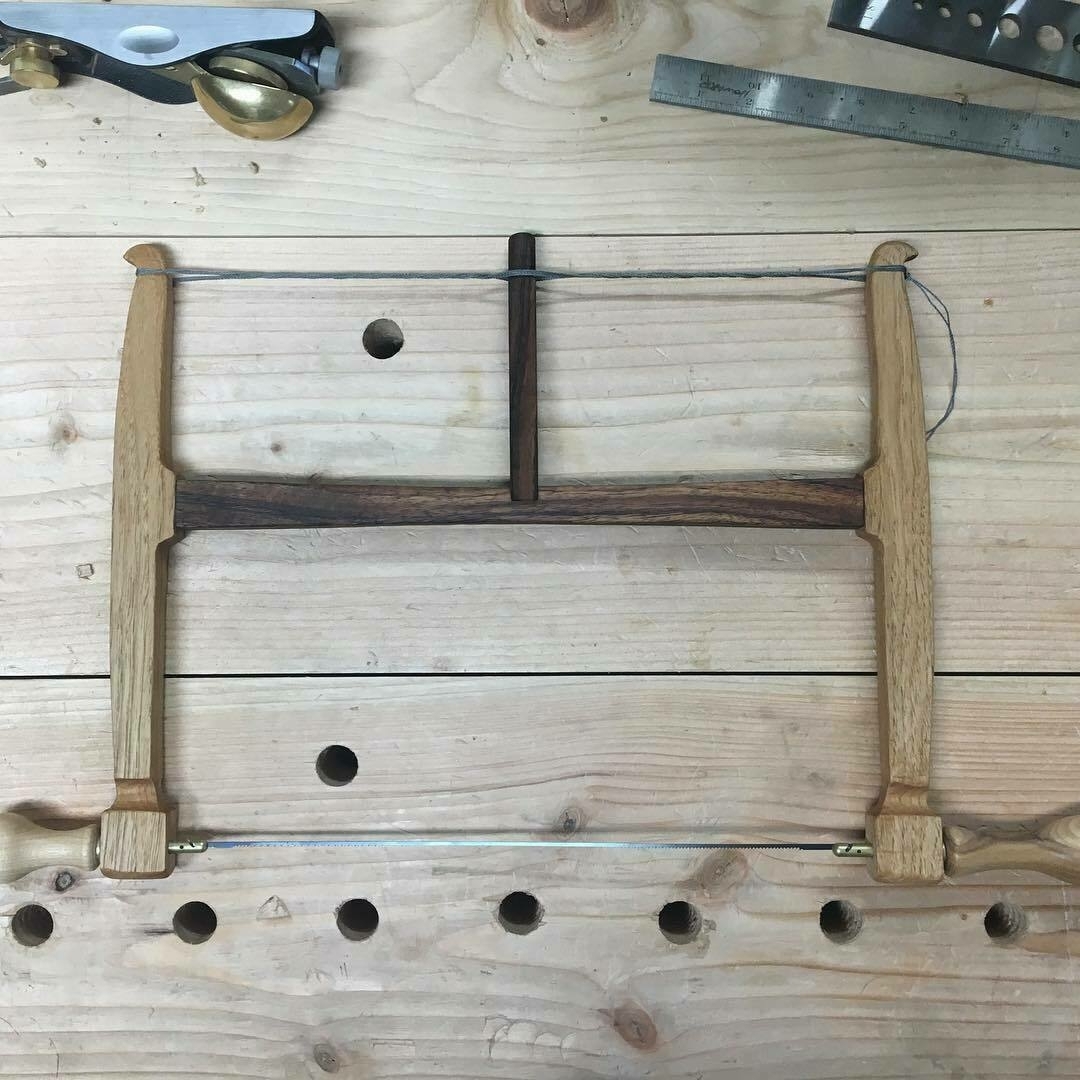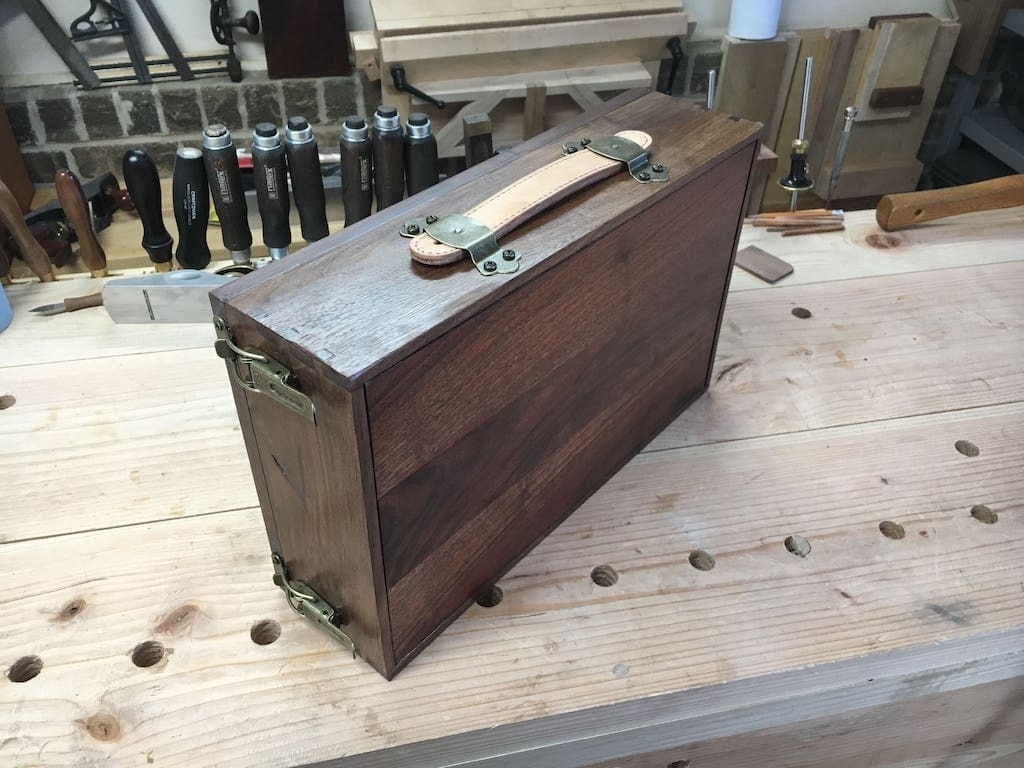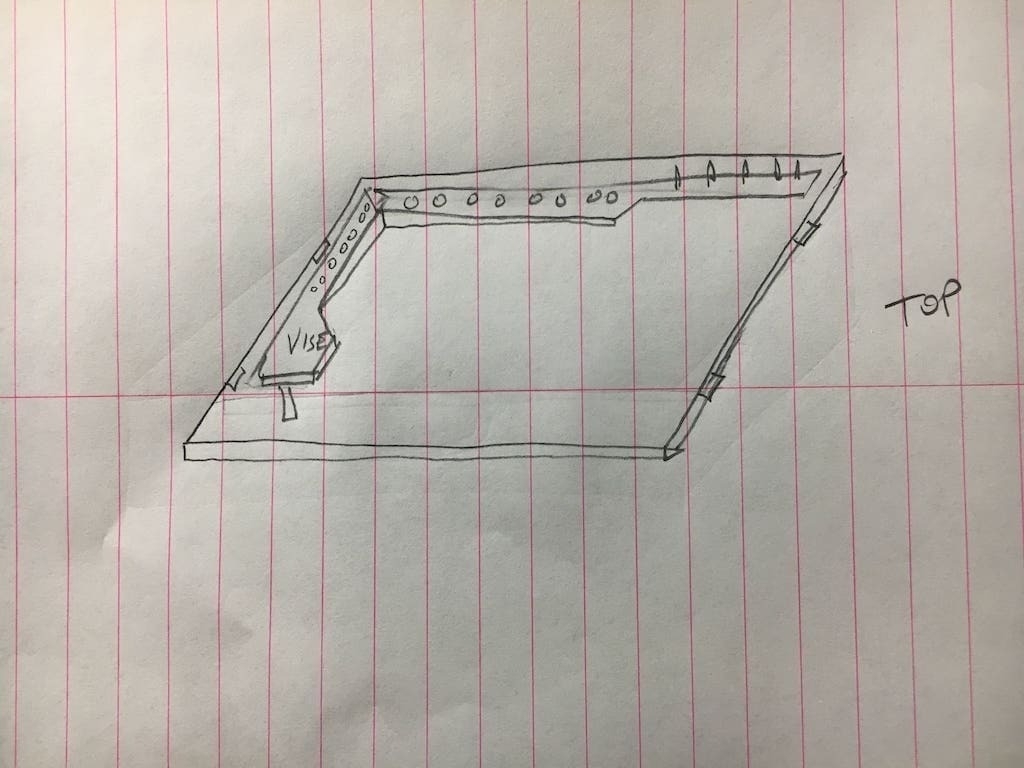[gallery size=full columns=1]

[gallery size=full columns=1]

[gallery size=full columns=1]


I have a new fly tying box. The aspect of this that I’m most proud of is that it was made with handtools from start to finish, with one small exception which I’ll detail below. It took about two months from start to finish, working on nights and weekends. I created this because I often tie flies away from home and I wanted a case that was easy to carry and also contained all the essential hardware. I also wanted a box that quickly converts to a tying station.
Here’s the finished product. I used about $50 of hardware from Rockler for the handle and the catches. The box is walnut, lined with cork on the bottom. The top is framed by walnut with cherry in the middle. Here’s the front:
 And here it is opened up. The raised L-shaped arm on the underside of the top is the tying station. There is also a swing-out arm with hand-made dowels to store/use 12 extra bobbins of thread, tinsel, wire, etc. The last “dowel” that you see in the front is made of metal. This metal dowel matches up with a rare-earth magnet on the underside of the base so it stays secured when swung in for storage.
And here it is opened up. The raised L-shaped arm on the underside of the top is the tying station. There is also a swing-out arm with hand-made dowels to store/use 12 extra bobbins of thread, tinsel, wire, etc. The last “dowel” that you see in the front is made of metal. This metal dowel matches up with a rare-earth magnet on the underside of the base so it stays secured when swung in for storage.
 Here’s the tying station set up for use with the tying vise in place, tools places in the holes in the L-shaped arm, and bobbins stacked on the swing-out holder. I also carved in three concave holes in the cherry base to hold various small tying items, and embedded a strong, long magnet on the insides across the front of the cherry base so that hooks are caught from falling on the floor. Lastly, I cut a shallow groove between the concave holders in back and the magnet in front so that if anything non-magnetic rolls (non-metal beads, mostly), they’ll settle in the middle of the station and not roll onto the floor.
Here’s the tying station set up for use with the tying vise in place, tools places in the holes in the L-shaped arm, and bobbins stacked on the swing-out holder. I also carved in three concave holes in the cherry base to hold various small tying items, and embedded a strong, long magnet on the insides across the front of the cherry base so that hooks are caught from falling on the floor. Lastly, I cut a shallow groove between the concave holders in back and the magnet in front so that if anything non-magnetic rolls (non-metal beads, mostly), they’ll settle in the middle of the station and not roll onto the floor.
 Here’s a walk-through of how it was made.
Here’s a walk-through of how it was made.
I started out with a bunch of walnut tongue and groove boards I was given by a neighbor. I had a rough piece of cherry also, not pictured here.
 I then drew up a rough plan of what I wanted. I set outside dimensions and the height of the box (it had to be big enough to hold all my stuff and tall enough to store and mount my vise), but I didn’t use a ruler to measure out anything else for the box. I based every other cut by referencing from other parts.
I then drew up a rough plan of what I wanted. I set outside dimensions and the height of the box (it had to be big enough to hold all my stuff and tall enough to store and mount my vise), but I didn’t use a ruler to measure out anything else for the box. I based every other cut by referencing from other parts.

 The hardest (manual) work in creating the box was resawing all the stock with my rip saw and planing it down to final dimensions.
The hardest (manual) work in creating the box was resawing all the stock with my rip saw and planing it down to final dimensions.
 The bottom panel was glued up with hide glue (I used hide glue for the entire project).
The bottom panel was glued up with hide glue (I used hide glue for the entire project).
 Then I cut all the dovetails for the box frame and the grooves to house the bottom panel.
Then I cut all the dovetails for the box frame and the grooves to house the bottom panel.
 Here’s the box in the process of being dry fit.
Here’s the box in the process of being dry fit.
 And here’s the interior of the box all fit together, complete with the inner carrying compartment. The small compartment is sized to hold the fly tying vise clamp. The odd U-shaped bit and hole on the right side is custom-sized so that it perfectly fits my vise. The rest of the area is for tool storage. The outside L-shape is where the tying base mounted to the box top fits in for storage.
And here’s the interior of the box all fit together, complete with the inner carrying compartment. The small compartment is sized to hold the fly tying vise clamp. The odd U-shaped bit and hole on the right side is custom-sized so that it perfectly fits my vise. The rest of the area is for tool storage. The outside L-shape is where the tying base mounted to the box top fits in for storage.
 Then I lined the bottom with cork.
Then I lined the bottom with cork.
 The next image shows how much the storage compartment holds: the vise, the vise clamp, all my tools, and a bunch of extra stuff depending on what I might need for a particular session.
The next image shows how much the storage compartment holds: the vise, the vise clamp, all my tools, and a bunch of extra stuff depending on what I might need for a particular session.
 Next, I started on the top of the box: walnut frame with mortises/tenons and a cherry panel.
Next, I started on the top of the box: walnut frame with mortises/tenons and a cherry panel.
 Here is the top completed, exploded view.
Here is the top completed, exploded view.
 Here’s the one spot where I had to use a power tool: a table saw. I needed to cut out a really big space to hold the hidden magnet, but it had to cut in a way that the top was really thin so that the magnet had enough strength through the wood to hold hooks and other metal objects on the base. I didn’t try to do this by hand with such small margins. So I used the table saw to cut a deep groove, then used a 1/4" mortise to square up the hole so I could fit the magnet.
Here’s the one spot where I had to use a power tool: a table saw. I needed to cut out a really big space to hold the hidden magnet, but it had to cut in a way that the top was really thin so that the magnet had enough strength through the wood to hold hooks and other metal objects on the base. I didn’t try to do this by hand with such small margins. So I used the table saw to cut a deep groove, then used a 1/4" mortise to square up the hole so I could fit the magnet.
 After the top was completed, I then started working on the L-shaped tying station that mounts into the top. I used a Raamtang vise I made, ideal for holding small parts for shaping and planing down.
After the top was completed, I then started working on the L-shaped tying station that mounts into the top. I used a Raamtang vise I made, ideal for holding small parts for shaping and planing down.
 here’s the L-shaped tying station top, the bobbin holder, and the arms to attach it to the base with the mortises cut out.
here’s the L-shaped tying station top, the bobbin holder, and the arms to attach it to the base with the mortises cut out.
 I cut out the dowel for the corner arm and the tiny dowels for the bobbin holder using a dowel maker from Lie-Nielsen.
I cut out the dowel for the corner arm and the tiny dowels for the bobbin holder using a dowel maker from Lie-Nielsen. I also had to cut in a groove where the clamp fits on the tying station because I made it just a tad to short and there wasn’t enough space to tighten the clamp. So this solved that small error.
I also had to cut in a groove where the clamp fits on the tying station because I made it just a tad to short and there wasn’t enough space to tighten the clamp. So this solved that small error.
 I finished it all up with Osmo polyx-oil.
I finished it all up with Osmo polyx-oil.


[gallery size=full columns=1]

[gallery size=full columns=1]
